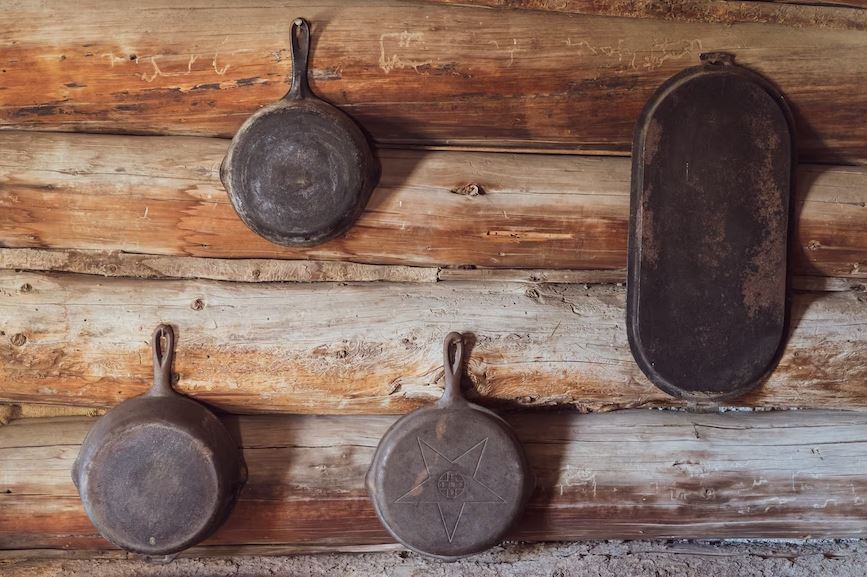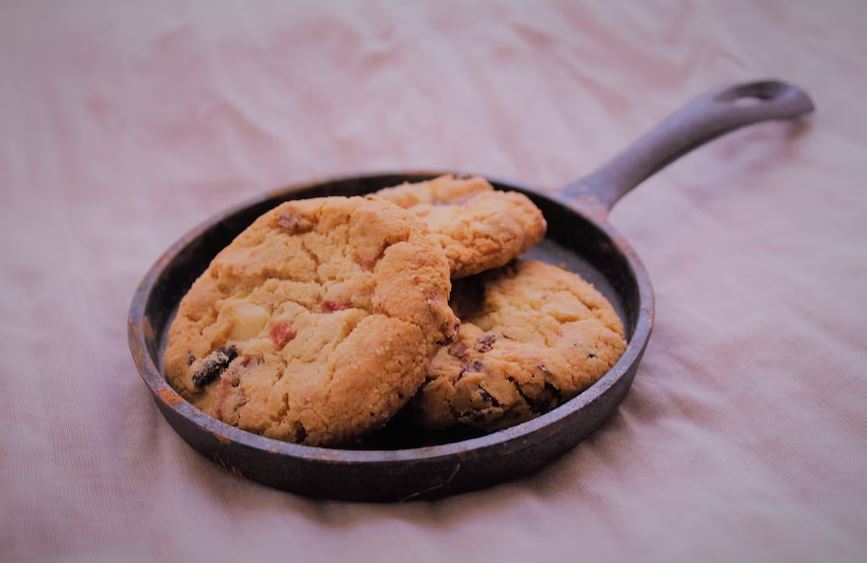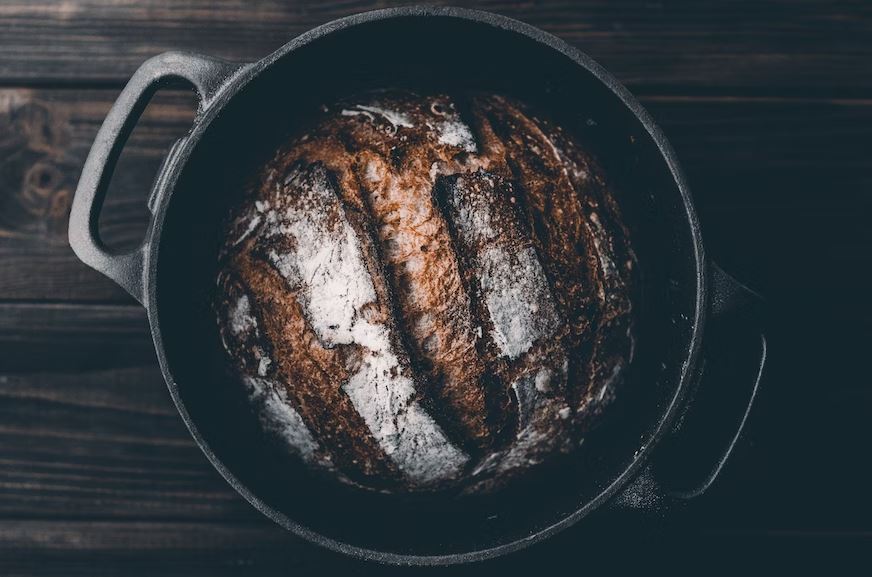Introduction
When you go to your preferred home goods retailer and go to the section of the store that is dedicated to baking, you will see that there are countless baking pans available for purchase. It would appear that new pans for particular categories of baked products are released regularly. Seasonal pans that allow you to make cakes in unusual shapes are also available. But if you are going to be doing a lot of baking, what different kinds of pans should you keep in your kitchen?
Baking is an art form, and to make your masterpiece, you will need to have the appropriate pans. It is not enough to simply own one or two baking pans to be successful. In addition, there are numerous choices available to you when it comes to the different kinds of baking pans that you can use. Whether or not you use the appropriate baking pan will determine the quality of your food.
Different Types of Baking Pans
Sheet Pan
These are necessary for everyone interested in beginning the hobby of baking. Baking sheets that are shallow, flat, and have a low rim around them are called sheet pans. Because it has a rim, lining the pan with a baking sheet that will not slide off of it is made much simpler.
Not only are they useful for making cookies, but you can also roast vegetables in them, prepare meat with them, and do a variety of other things. You really must have at least two of these because they are the workhorses of the kitchen in general. The majority of bakers prefer to have three or more, however, it is possible to get by with just two.
Sheet pans are available in a variety of sizes, but the half-sheet pan, which measures 12 by 16 inches, is one of the most flexible options to choose from. As a result of the baking sheets, these pans are very easy to clean, and it is never difficult to store them because of how thin they are.
Round Pan
Baking cakes in circular pans, which are often constructed of aluminum and produce layers of cake that are soft and evenly baked, is a common baking technique. Even though they are most commonly associated with making cakes, round pans are quite adaptable and may be used to produce a wide variety of baked items, including cheesecakes and brownies, in a pinch.
There is a wide range of sizes available for round pans. If you are just starting, it is strongly suggested that you invest in two stacking pans of the same size. When it comes to baking cakes, a round pan with a diameter of 8 inches is an excellent place to begin.
As you become more self-assured in your ability to bake, you should feel free to accumulate extra sizes. You can also get some specialist variations of round pans, such as a springform pan, which features a detachable bottom and is great for making cheesecake. There are also some standard varieties of round pans.
A Nonstick Baking Pan
Because the nonstick coating on the bakeware makes it difficult for batters to adhere to the surface of the pan, it is an excellent choice for new bakers who are just getting their feet wet in the baking world. A standard pan set will normally include a cookie sheet, a bread pan, and several different cake pans. In addition, nonstick bakeware is typically safe for use in the dishwasher, which makes cleanup a breeze so that you can quickly go back to enjoying the fruits of your labor.
Tube Pan
People frequently get the tube pan and the Bundt cake pan mixed up because they only need to look at them for a moment. Even though their fundamental designs are comparable, tube pans typically do not include the ornamental feature that the other type of cake pan does.
In addition, tube pans are also referred to as angel food pans since they are ideal for the preparation of angel food cakes. Not only that, but they are most successful when used with cakes that are light and airy. These cakes receive the most support possible from the tube in the middle of the baking pan, which prevents them from falling apart or ending up with a hollow spot in the middle while they are being baked.
Even while not all pans have them, some tube pans come with small feet attached to the top of the pan. This is done so that the cakes can be cooled properly by inverting them. Putting the pan upside down and lifting it off the counter will allow you to receive the most flawlessly delectable cake possible. The feet on the bottom of the pan will ensure that it remains supported.
The Bundt Pan
This type of pan is for cakes that do not require any further decorating on top of what is already there. The pan itself has fluting motifs on the top and the sides to serve as decorative accents. The end product is going to be a cake that is going to be edible from the very beginning of the process. The tube in the middle of the pan gives it flexibility, allowing it to be used with cakes that are either light or dense. It makes the density of the whole cake more even as a result.
When you have completed the task, all that is left to do is drizzle a thin layer of glaze over the finished result, and your cake will be ready to serve. Because Bundt cake pans are typically somewhat cumbersome, storing them can be a challenge. Because of this, clean-up can become difficult, but they are simple to disassemble and place in a separate area.
Loaf Pan
Loaf pans are not only required when you wish to make loaves of bread; rather, they are an essential component of every kitchen. This is yet another multipurpose dish that can be employed for the preparation of sweet as well as savory dishes. Baking sheets may be used to easily line loaf pans, which makes these pans ideal for preparing recipes that call for quick bread or meat loaves.
Baking is a lot easier when you use loaf pans because the sides are raised higher. It also means that you may load them to capacity without having to worry about the contents of the baked items pouring over the sides. It takes a lot of the guesswork and mathematical complexity out of this field for people who are just starting.
In most cases, these are rectangular, and the fact that they have a vintage shape makes them an absolute necessity. In addition, a lot of families only have one cake pan because it’s been handed down from generation to generation.
Half-Sheet Pan
These flat pans with raised sides are perfect for baking biscuits, scones, and pastries like croissants. In addition, you can use them as roasting pans for vegetables, fish, and meat that has been spatchcocked. Cookie sheets are another name for sheet pans, however, true cookie sheets only have a rolled edge on one side for easy handling. The remaining sides of a true cookie sheet are open, which makes it simple to move baked cookies from the sheet to a cooling rack.
Muffin Pan
A muffin pan has 12–24 inset wells with slanted walls and is an essential appliance for making muffins as well as other cupcake-yeasted pastries such as morning buns, Gugelhupf, or popovers. These pans are also available as silicone molds, which provide an even simpler release than their metal counterparts.
Baking Pan
Baking pans are essential if you want to have an oven-safe dish that can be used for a variety of purposes. There is a wide selection of sizes and materials available for use in the production of baking pans. Your approach to cooking and baking will determine which sort of baking pan is best for you, and your options include everything from ceramic and glass to metal and more.
A ceramic baking pan is a perfect choice for individuals who have a greater interest in baking. Because it has higher sides than a conventional sheet pan, the 9-by-13-inch size is the one that will work best for them. This indicates that it works better for baking cakes than it does for baking cookies.
A baking pan that can be used for a variety of purposes is ideal for not only making cakes but also roasting chicken and cooking savory dishes. Because this is the normal size for most sheet cakes, selecting this dimension is your best option.
Pie Dish
Crimping a crust that is golden brown and buttery can be accomplished with relative ease using a pie dish that has large fluted edges. Plates made of ceramic or glass heat slowly and evenly, making them ideal for the extended periods of baking time required to create a delectable pie.
This baking dish is an absolute necessity for making traditional, deep-dish, seasonal pies. Wide fluted edges make it easier to crimp a golden brown, buttery crust, and ceramic or glass heats slowly and evenly, making it ideal for the extended bake times required to produce a flawless pie.
A Pizza Pan
One of life’s greatest pleasures is making one’s pizza but doing it successfully without the use of a pizza pan is next to impossible. A perforated base allows air and heat to flow through, which results in an even and crisp crust. The pizza stone is a heat-conducting baking stone that may be placed in an oven or on a grill and used to make freeform pizzas, flatbreads, and loaves. It is an upgrade from the pizza pan, which is the standard cooking surface for pizza.
Springform Pan
You can bake items with open, set sides, like a cheesecake or short-crust tart, using a springform pan, but you can also use it for the easy release of cakes. For example, you could use it to bake a cheesecake. This convenient pan has a base that can interlock with itself and fits into an expanded rim that has a latch on the outside. After the casserole has been baked and given time to cool, you just need to flip the latch and carefully remove the outside rim from the dish.
Square Pan
Use a square cake pan, which is normally 9 inches by 9 inches, or a rectangular baking pan, sometimes known as a quarter sheet 9 inches by 13 inches, to bake brownies, sheet cakes, caramels, or cut cookies with high sides. Alternatively, use a rectangular baking pan. These pans can also be utilized in the preparation of savory foods with layered construction, such as lasagna and casseroles.
Cocotte
This heavy-duty cast-iron pot is sometimes referred to as a Dutch oven. The top of this pot retains steam, creating an atmosphere similar to that of a well-stocked bakery. For sourdough and other free-form loaves, a cocotte of 12 inches in diameter should be used.
Tart Pan
Round, shallow baking dishes with fluted edges and detachable bottoms characterize tart pans. After baking, the crimped sides can be released in a manner analogous to that of a springform pan, resulting in a gorgeous and crisp presentation of delicate sweet or savory tarts, as well as pastries.
Materials Used in Baking Pans
Aluminum Pans
When it comes to frying pans, aluminum is the material of choice for several reasons. Because of their capacity to uniformly transfer heat and the fact that they are very lightweight, these pans have established themselves as a go-to option for baking. However, aluminum pans are not non-stick, therefore it is important to grease them thoroughly before using them.
Glass Pans
When it comes to uniformly transferring heat, glass is not the greatest material to use for baking pans, even though many older styles of baking pans were made of glass. When you’re searching for a uniform and consistent bake, using aluminum or non-stick pans is your best bet for getting the job done.
Non-Stick Pans
A non-stick pan is another essential item that we keep in our baking supply pack because it makes the baking process much simpler. Your baked items will be much simpler to remove from the tin thanks to the non-stick features of the pan; nevertheless, to keep the non-stick coating in good condition, these pans require additional attention and care. When baking an angel food cake, for example, in which the fragile cake has to cling to and ascend the sides of the pan, you will not want to use a non-stick pan because it will prevent the cake from doing either of those things.
Silicone Pan
Silicone baking pans are not good for transferring heat, hence they are typically only used for making creative things. These pans can be entertaining, but they work best for tasks that do not require baking, such as preparing ice cream or fudge.
Conclusion
Baking is both an art and a science; just as each component of a recipe serves a specific function, so does the particular pan you choose to employ in the process. You won’t run into any problems if you bake to your heart’s content using the baking pans that we’ve provided above.




